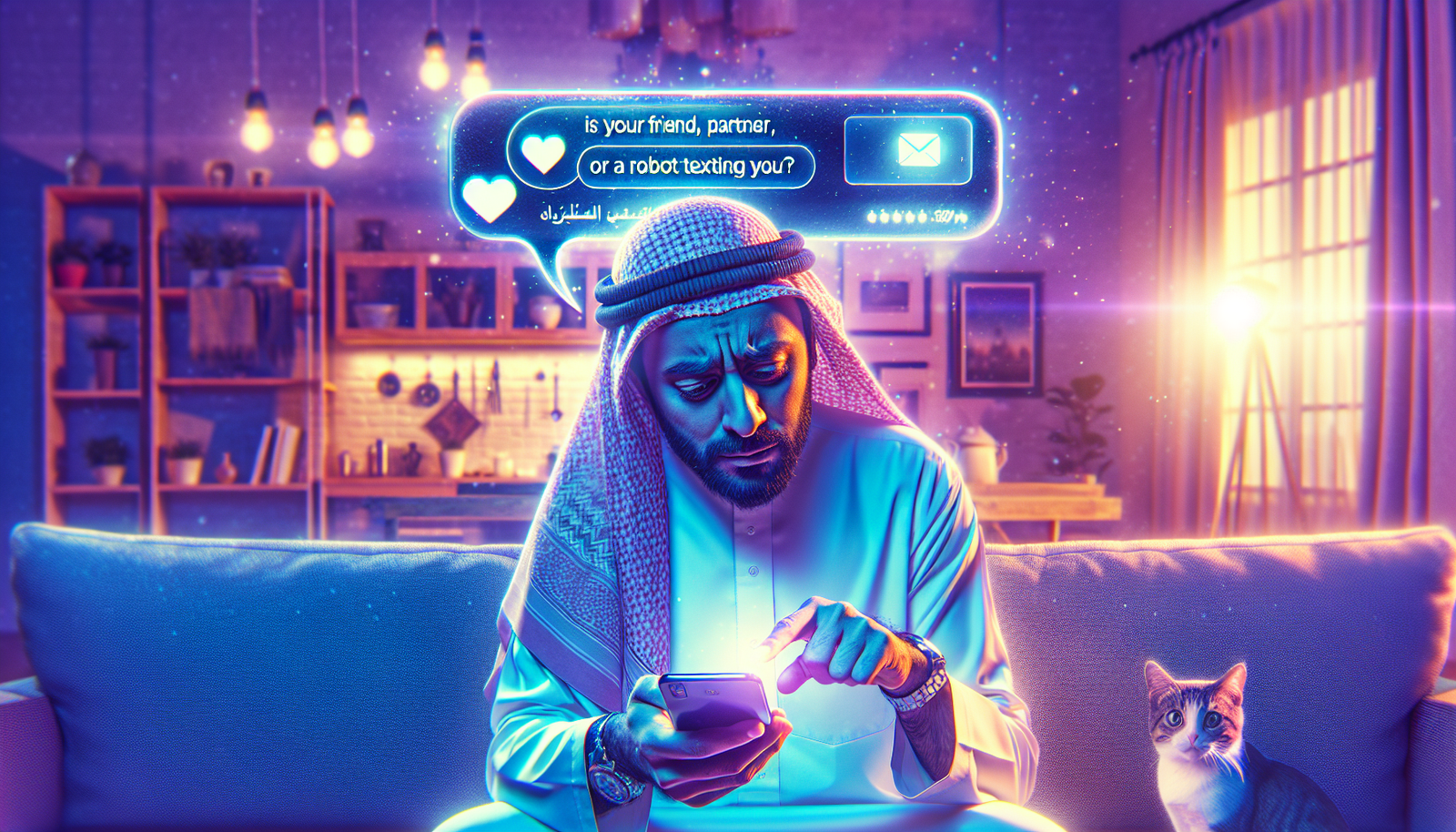The ChatGPT Phenomenon and Digital Communication
The rapid rise of ChatGPT has revolutionized the way individuals interact, both personally and professionally. Users facing communication difficulties are turning to this artificial intelligence to draft messages. The concerning aspect lies in ChatGPT’s ability to generate messages that blend seamlessly into a human conversation.
Testimonials reveal that individuals, like Tim, have used this technology to improve their relationships. By transcending communication barriers, he began using it to express feelings and manage conflicts with his wife. ChatGPT allows him to explore approaches he would not have considered, thus transforming the couple’s dynamic.
Identifying the Sender of a Message
The question then arises: does a message truly come from a friend, a partner, or a robot? The detection of the sender’s identity is becoming increasingly important as AI technologies integrate into our daily lives. The characteristics of the message, its formulations, and its content can mislead the user, causing them to confuse a genuine human exchange with a chatbot interaction.
Studies on message perception show that users adjust their expectations regarding communication. Artificial intelligence can create personalized responses based on past interactions, complicating the task of distinguishing human communication from that of a robot. Tools like GPTZero prove to be effective solutions for pinpointing the source of texts, providing clues about whether the content originated from a human or artificial source.
Social and Personal Implications
The implications of this phenomenon go well beyond simple interactions. The widespread use of ChatGPT as an intermediary in human connections raises essential questions about the authenticity of relationships. The growing dependence on these technologies could lead to a form of alienation, limiting authentic and rich human exchanges.
Cases like Yvette’s, who uses ChatGPT to draft messages to her ex-partner, illustrate this point. By resorting to artificial intelligence to articulate her thoughts, she avoids emotional confrontations. However, the risk arises of diminishing the depth of real emotions by replacing them with robotic formulations, thereby widening the gap between human and machine experiences.
The Psychological Stakes of AI
Experts highlight psychological issues related to interaction with ChatGPT. The platform is perceived as an emotional support, a life coach, or even a therapist for some. Although this use may offer a form of short-term relief, it raises concerns about a potential substitution for human therapy. Interactions with robots can influence the perception of emotions and relationships, hindering introspection and personal development.
Tim, for example, sees ChatGPT as a tool for learning emotional intelligence. However, by taking advice from a digital entity, the risk is to miss essential nuances in understanding his partner. This phenomenon exacerbates the need for open discussion about mental health and human relationships, especially at a time when AI tools dominate.
The Future of Human Communication in the Face of AI
The future prospects for human communication in the face of the rise of ChatGPT and other AIs will be crucial. The impact on the workplace, with more people relying on AI solutions to solve problems, could reduce opportunities for face-to-face interaction and diminish the benefits of human collaboration. Organizations must consider how to effectively integrate these tools to preserve the integrity of interpersonal exchanges.
Society must reflect on its relationship with new technologies while keeping humanity at the heart of interactions. The rise of bots and chatbots as communication supports could create dependency, making authentic dialogue increasingly rare. A balance will be necessary to navigate this new landscape. Open discussions around the implications of AI should promote a deeper understanding of interpersonal interactions.
Frequently Asked Questions About ChatGPT: Identify the Origin of Your Messages
What is ChatGPT and how does it work?
ChatGPT is a language model developed by OpenAI, designed to understand and generate text conversationally. It uses a deep learning algorithm to analyze language and produce relevant responses based on context.
How can I tell if a message comes from ChatGPT or a real person?
To distinguish a message generated by ChatGPT from a message from a real person, it is helpful to analyze the language style, the complexity of the responses, and the customization of the content. If the message seems too general or impersonal, it could originate from an AI.
What are the signs of a human response in a message?
Messages from real people tend to include more nuanced emotions, personal experiences, and a unique communication style. Look for references to recent events or specific anecdotes.
Can ChatGPT imitate the writing style of a specific person?
Yes, ChatGPT can be programmed to imitate the writing style of a person if it has been exposed to examples of that style. However, this relies on limited data and some approximation.
Are there risks to using messages generated by ChatGPT in interpersonal communications?
Yes, AI-generated messages can create misunderstandings and harm authentic communication, as they often lack the emotional nuance and contextual understanding that only human interactions can provide.
How can users benefit from ChatGPT in their daily conversations?
Users can use ChatGPT to obtain message suggestions, clarify their thoughts, or even prepare responses for delicate conversations, but it is essential to adjust and personalize the content before sending it.
Is ChatGPT capable of understanding the emotional contexts of conversations?
While it can analyze text and generate responses based on patterns, ChatGPT does not understand emotions in the same way a human does, and its advice may be limited in emotional depth.
How can I protect my conversations from misinterpretations by an AI?
Use clear and precise language and avoid ambiguous references. Establish explicit reference points to prevent the AI from misinterpreting the content.
What is the importance of transparency regarding the use of AI like ChatGPT in conversations?
Transparency is crucial to maintaining trust in communications. Informing participants that an AI is involved in the conversation can help avoid misunderstandings and ensure a more authentic interaction.






